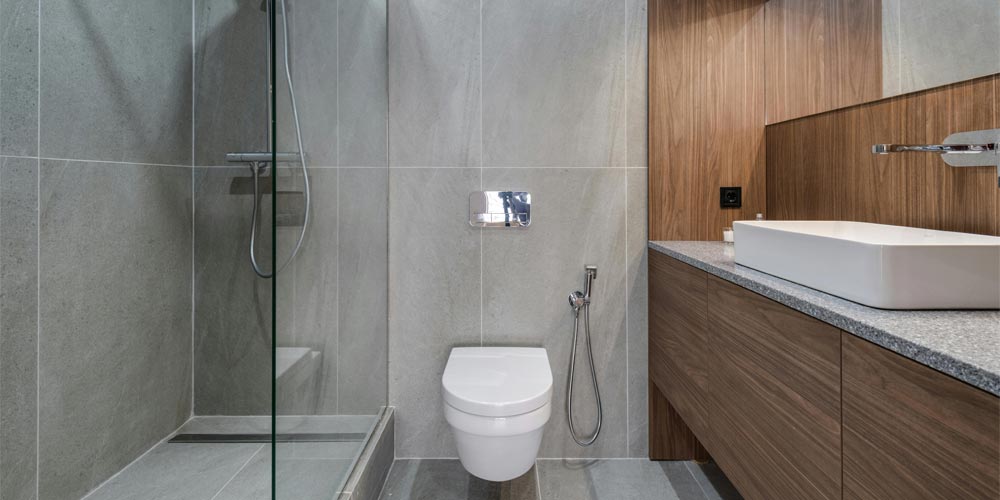
1. Waterproofing
It’s crucial that every surface in a wet room—floor, walls, and ceiling—is completely waterproof. This process usually accounts for a large portion of the renovation budget, as the entire area must be stripped back and sealed to prevent water damage. Proper waterproofing is essential for the durability and safety of the space.
2. Tile Selection
Not all tiles are suitable for wet room environments. For your small wet room design, be sure to choose tiles that are specifically designed for high-moisture areas. opt for non-slip floor tiles to prevent accidents, and consider high-quality, water-resistant wall tiles to ensure the space stays dry and functional over time.
3. Storage Solutions
Standard storage options may not work in a wet room, so consider alternatives like wall-mounted shelves or built-in waterproof cabinets. These solutions will help you maximize available space and maintain a clean, clutter-free environment without compromising functionality.
4. Proper Ventilation
A high-quality extractor fan is essential in a wet room to eliminate excess moisture, which can lead to mold and mildew. The fan should be capable of handling the high levels of steam produced by hot showers. Proper ventilation will keep the room dry and improve air quality, preventing long-term damage.
5. Drainage and Floor Slope
Proper drainage is essential in a small wet room to ensure water flows toward the drain and doesn’t pool in any areas. A gentle slope in the floor towards the drain is necessary to prevent water from spilling over. The slope should be subtle enough to avoid creating tripping hazards while ensuring the water drains effectively.
6. Heating Options
In smaller wet rooms, heating is essential to dry the floor quickly and maintain comfort. Underfloor heating is a great option since it doesn’t take up valuable wall space and helps keep the room warm and dry. Heated towel rails can add both functionality and warmth, ensuring towels are dry and ready for use.
7. Moisture Resistance Lighting
Wet rooms require specific lighting that can withstand high humidity. Ensure all light fixtures are rated for use in wet environments (IP44 or higher). Consider dimmable LED lighting or waterproof spotlights to create the perfect ambiance, making sure the room stays well-lit without compromising on safety.
8. Accessibility Features
When designing a wet room in a small bathroom, consider accessibility features such as grab bars, a shower seat, and a handheld showerhead. These additions not only improve safety but also add to the functionality of the space, making it easier for people with mobility challenges to use the wet room.
9. Colour Scheme and Aesthetic
For small wet room designs, using light and neutral colours can help create the illusion of a bigger space. Consider using light-coloured tiles, such as whites, greys, or soft pastels, to reflect light and make the room feel more open. Adding accents like coloured towels or artwork can bring personality to the space without overwhelming it. Head over to Interiora For more bathroom design tips and advice
